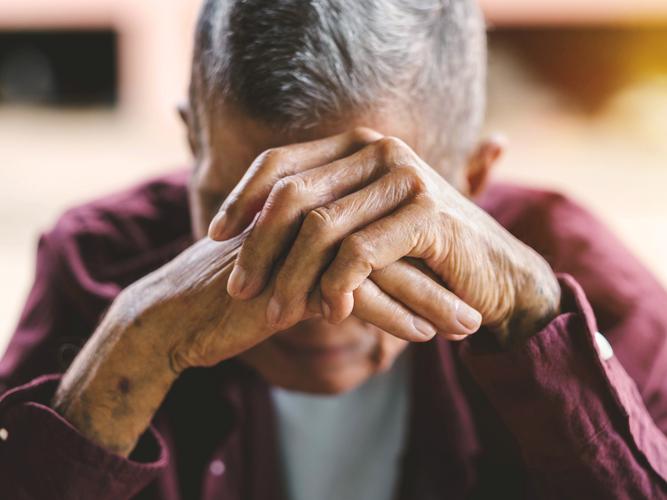CHICAGO, IL – Pressure ulcers are serious medical conditions and one of the most important measures of the quality of clinical care in nursing homes, according to Centers for Disease Control and Prevention (CDC). Pressure ulcers, also known as bed sores or pressure sores, are caused by unrelieved pressure on the skin. The CDC states as many as one out of every 10 nursing home residents currently suffer from pressure ulcers.
While this may be alarming, this is a problem that has persisted in the long-term care industry. Bed sores typically develop over bony areas, such as the elbow, heel, hip, shoulder, back, and back of the head. Bed sores can be classified from stage 1 to stage 4 depending on the depth of soft tissue damage.
Early Symptoms of Pressure Ulcers
Some early warning signs of pressure ulcers include unusual change in skin color or texture, swelling, pus-like draining, tender areas, and an area of skin that feels cooler or warmer to touch than other areas.
Other signs may include skin that doesn’t turn white (blanch) when pressed, blue or purple tint on the skin (if you have darker skin), and pain, tingling, or itching – no matter how minor.
Stages of Bed Sores
- Stage 1: The least severe; persistent redness of skin. These pressure ulcers only affect the upper layer of skin.
- Stage 2: Loss of partial thickness of skin appearing as an abrasion, blister, or shallow crater.
- Stage 3: A loss of full thickness of skin, presented as a deep crater.
- Stage 4: The most severe; Loss of full thickness of skin exposing muscle or bone.
In 2004, nearly 160,000 nursing home residents, or 11 percent, had pressure ulcers – stage 2 pressure ulcers were among the most common.
Clinical practice guidelines have been developed and provide specific treatment recommendations for stage 2 or higher-pressure ulcers, which includes proper wound care. Unfortunately, many times this is ignored, and pressure ulcers can continue to worsen.
Causes of Pressure Ulcers
Pressure sores develop in areas that a person’s weight has caused friction against a surface. If pressure lasts more than two to three hours, your blood circulation is restricted from reaching those areas, which causes the skin and underlying tissues to become damaged. Typically, when residents aren’t turned every few hours as they’re supposed to this is when pressure ulcers begin to form.
Pressure sores are more likely to develop when you’re elderly. As you age, your skin becomes more fragile, easily damaged, and more susceptible to developing pressure ulcers. You’re also more likely to develop pressure sores if you have mobility issues, suffer from malnutrition, or have a loss of sensation in your skin.
Prevalence of Pressure Ulcers Vary
One study found nursing home residents aged 64 and under were more likely than older residents to have pressure ulcers. Pressure ulcers are also more common in males compared to females. Residents in nursing homes for 1 year or less were more likely to have pressure ulcers than those with a longer length of stay. The study also found no significant difference between white and nonwhite populations with respect to developing pressure ulcers.
The same study found that nursing home residents who experienced a recent weight loss were more likely to develop bed sores. Residents with greater immobility had an 11% great occurrence of pressure ulcers than those without high immobility. Pressure sores were also more prevalent in residents who had recently bowel or bladder incontinence.
Diagnosis & Treatment
Professional healthcare providers can diagnose bed sores by looking at the skin and staged according to their appearance.
John Hopkins Medicine mentions bedsores can be treated by:
- Removing pressure on the affected area
- Protecting the wound with medicated gauze or other special dressings
- Keeping the wound clean
- Ensuring good nutrition
- Removing the damaged, infected, or dead tissue
- Transplanting healthy skin to the wound area
- Negative pressure wound therapy
- Medicine
Healthcare providers should watch bed sores closely to ensure they don’t worsen by documenting size, depth, and response to the treatment.
Can Pressure Ulcers be Preventable?
Pressure ulcers can be prevented by inspecting the skin for areas of redness, the first sign of breakdown of the skin, specifically paying close attention to bonier areas. Other methods of preventing bed sores include:
- Turning and repositioning every 2 hours
- Sitting upright and straight in a wheelchair, changing positions every 15 minutes
- Providing soft padding in wheelchairs and beds to reduce pressure
- Providing good skin care by keeping the skin clean and dry
- Providing good nutrition because without enough calories, vitamins, minerals, fluids, and protein, bed sores can’t heal
Contact a Nursing Home Neglect Lawyer in Chicago, Illinois
If your loved one has developed bed sores living in a nursing home, this may be a sign your loved one is being neglected. Please contact one of our experienced nursing home neglect attorneys at Dinizulu Law Group for a free consultation at (312) 384-1920 or visit our website for more information.



